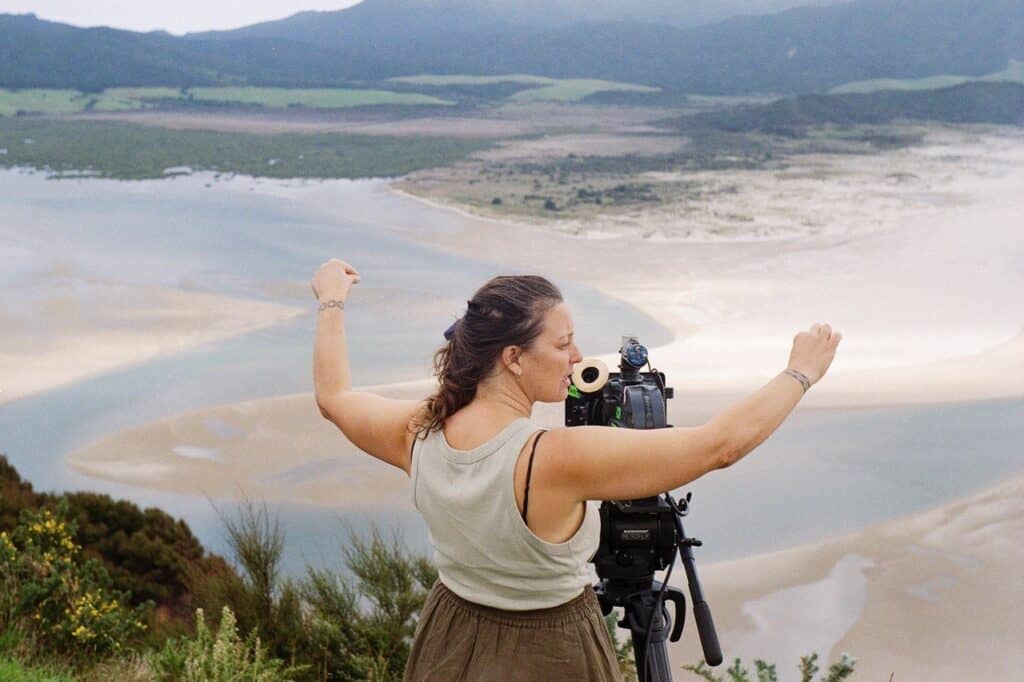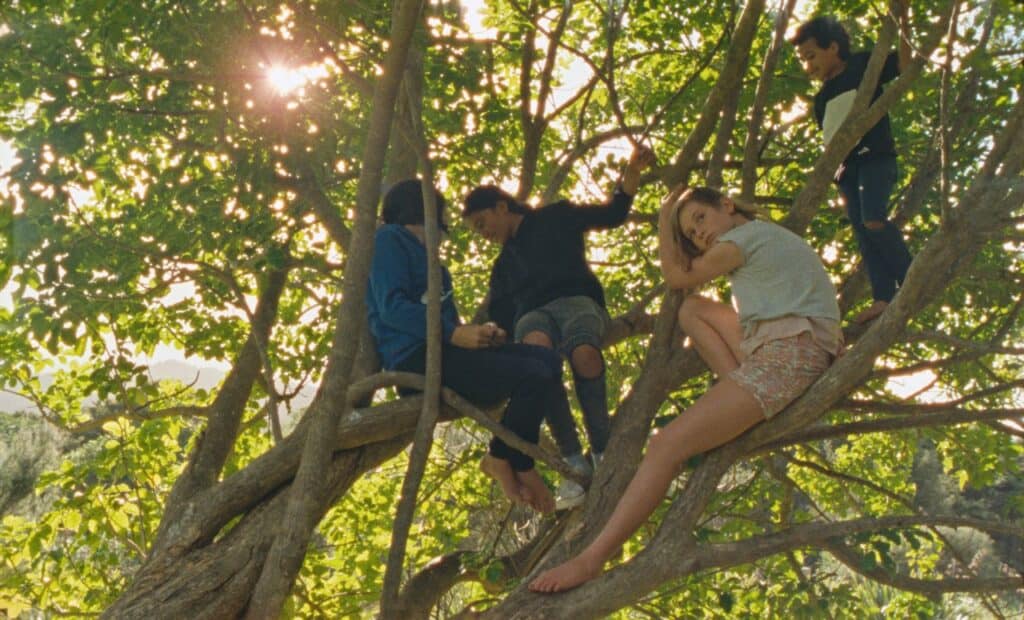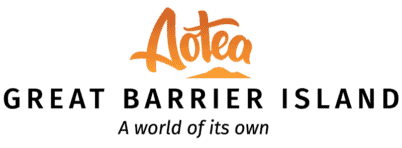From Ōkiwi School to Sundance Film Festival – World premiere screening in Claris on 12 January.
The hunt is on for red carpet as the island plays host to the world premiere screening of a short film selected for this year’s Sundance Film festival.
Hawaiki was filmed over several days last Easter at Ōkiwi school.
 Film maker Nova Paul (Ngāpuhi) describes it as a purely observation film.
Film maker Nova Paul (Ngāpuhi) describes it as a purely observation film.
“The children at the kura have this space called Hawaiki, the area around a tree. Every parent and all the kids know about it. When my son went there in 2020, the kids welcomed him with a powhiri, in their way, in an imaginative playing, connected way.”
Hemi, now 12, provides a mihi to the tāmariki o Hawaiki at the start of film, then it follows the world created by the school children, who are aged between two and 12.
At times Nova filmed just a metre away, the children unaffected by her crew’s presence, “gently going about their business. I really appreciate their generosity of letting me in.”
“They clearly demonstrate in the film that that they are tāmariki guided by the land, that they are self-determining their existence in that space, and it is setting them up to build the world that they want.”
“It is not an innocent film, it’s a wise film. These children are being wise.”
As a film maker Nova looks “for moments that encapsulate tino rangatiratanga, mana motuhake, or sovereignty; for everyday places where Māori connect to land, artforms, language, each other, and to ancient stories.
“Hawaiki is an ancient story, it’s a huge story, about where we come from and where we go to.”
While filming, Nova realised she was capturing what she had done on this island when she first came with her mum and grandparents in the 1970s, playing in trees, weaving things, making berry juice.
“I spent my childhood camping under trees at surf breaks”, exploring Whangapoua around Mabey’s farm, Kawa, and Awana, where she has a home today.
“The taiao, the natural environment, has a profound effect on people here and those tāmariki at Ōkiwi have been absolutely fostered to value their tino rangatiratanga, mana motuhake. The kaiako, teachers, and the community enable them to be Māori and approach the world with a Māori world view, and if the students are not Māori they are valuing the relationship with mana whenua and the land. The land is the guiding principle.”
Hawaiki is one chapter in a five-chapter, 40-minute film Nova is making that will be screened in art galleries in Wellington and Whangarei during Matariki.
“Each starts with a tree, like the ancient pūriri behind Ōkiwi school. The Māori name for tree is rākau, and story is pūrākau. So, every tree has a story attached to it. The idea is the base of the tree is the story.”
Nova uses black and white, 16mm film and develops it using an emulsion made from the leaves of the trees she has filmed.
“Plant-based developers are an early 19th century experimental practice and I’ve basically refined the processes and developed a methodology to get these beautiful quality images, produced by tree juice.
“As a Māori artist, I want to think about our relationship to the trees, the land and the environment. It makes it a holistic process where you have mauri, wairua, whānaungatanga, the notion we a connected to trees, that they can be tuakana, that we have a whakapapa connection to them.”
 Hawaiki (2022) film still
Hawaiki (2022) film still
By following tikanga, “the tree gifted me these images, I didn’t take them.”
The screening at the Claris Club is an important part of launching her artwork into the world, with the blessing of Aotea’s mana whenua.
Hawaiki is one of only 19 international films that will be screened out of 64 selected from 10,000 entries into the 2023 Sundance Festival, to be held from January 19-29 in Utah, USA.
“It is an opportunity to have authentic conversations with other filmmakers about what I can contribute to indigenous storytelling, addressing what I think is important; the kaupapa around climate change and tino rangatiratanga, mana motuhake.”
At the Claris premiere she is looking forward to seeing the tāmariki, their parents, teachers and the mainly island-based crew who helped her, and to sharing the story with island residents and visitors.
“The crew and I found making it transformative, in a way that connects and upholds the mana of the land and people.”
She hopes it reflects that and brings together the ihi (essential force, personal magnetism), wehi (a response of awe in reaction to ihi) and wana (exhilaration) that is inherent in Māori performance.
The screening of Hawaiki is hosted by Small Island Big Ideas, the first of a summer season of talks and screenings by film makers and writers.
Tickets are $10 for adults available at www.smallislandbigideas.co.nz. Under 18 are free.
Theatre doors open at the Claris Club at 4pm on January 12, with food and drinks available after the screening and a Q and A with film maker Nova Paul.
Written by Tim Higham, with the support of Destination Great Barrier Island.

